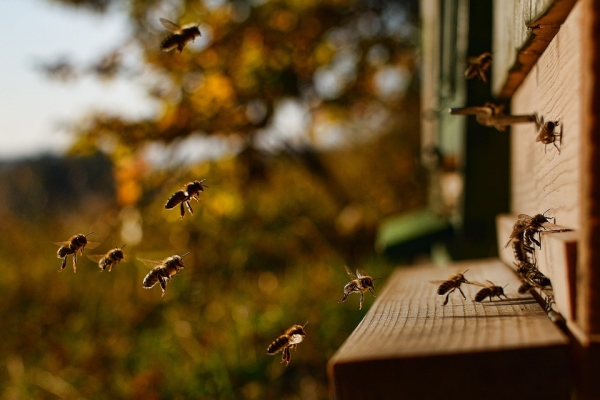In the earliest days of human flight, before the invention of the first radio beacons and ground-based electronic systems, and modern GPS, pilots commonly navigated by following roads and railways – striking linear landscape elements at ground level that guide towards a destination of interest.
Enter the honeybee. A century of research has shown that honeybees are navigators par excellence. They can navigate by their sense of smell, the sun, the sky’s pattern of polarized light, vertical landmarks that stand out from the panorama, and possibly the Earth’s magnetic field. They are also clever learners, able to recognize associations between disparate memories in order to generalize rules.
Now, scientists have shown that honeybees tend to search for their way home by orienting themselves in relation to the dominant linear landscape elements, just like the first pilots. The results are shown in Frontiers in Behavioral Neuroscience.
Dr Randolf Menzel, an emeritus professor at the Department of Neurobiology of the Free University of Berlin, and the study’s lead author, explained: “Here we show that honeybees use a ‘navigation memory’, a kind of mental map of the area that they know, to guide their search flights when they look for their hive starting in a new, unexplored area. Linear landscape elements, such as water channels, roads, and field edges, appear to be important components of this navigation memory.”
Read more at Frontiers
Photo Credit: mtajmr via Pixabay


